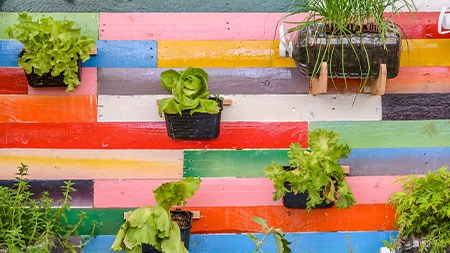There are several reasons why you may be considering starting your own vegetable garden.
You might have moved house and finally have the space to start such a project. You might wish to save money by growing your own vegetables or perhaps you just want to start a project the whole family can get involved in. Whatever the case, there are a few basic guidelines to follow when starting such a project.
Arguably the best way to go about starting a vegetable garden is to first decide where you are going to position it.
Generally speaking, vegetable gardens need plenty of sun, preferably around five to eight hours per day so avoid shady, treed areas. Vegetable gardens also need plenty of water so you need to make sure there is a water source nearby. If your intended area is subjected to a lot of wind it’s best to pick another spot too as the wind can dry out and damage crops.
Your intended area should be big enough to accommodate the number of vegetables you’d like to eventually harvest too. Generally speaking, 5x6m’s is a sufficient amount of space to feed a small family. Of course, if you don’t feel comfortable with working in such a large space or simply don’t have the room you can go for a smaller garden too.
Once you’ve selected an appropriate spot, you can begin to plan your garden.
Plan it on paper first and decide whether it will take the form of raised beds, traditional rows, or containers. The type of vegetables you plan on growing and whether or not you have animals that are likely to dig will also dictate what method you choose. Remember to incorporate enough space to work in at the planning stage. You will run into difficulties if you cannot work in and amongst your vegetables. Generally speaking, 60cm’s paths should suffice.
Next, check whether or not you have the correct tools for the job.
A few basic implements such as a spade, a rake, a good pair of gardening gloves, pruning shears, a trowel, a wheelbarrow, and a garden fork are all you’ll need to begin with.
Good quality soil that drains well is vital for the success of your garden. To establish whether or not your soil drains well, dig a hold approximately 60cm’s deep and fill it with water. If there is still water sitting at the bottom after 30 minutes, chances are you don’t have soil that drains well. To improve the drainage, dig about 10cm’s deeper and line the bottom with gravel. You can improve the quality of your soil at this stage too by adding organic matter such as leaves, manure or grass clippings. Replace the soil you dug out, add a thick layer of compost and bone meal and water deeply. Leave for about a week or two to allow the soil to improve before planting.
Once your soil is ready you can start to plant your veggies.
It makes sense to plant vegetables that you and your family eat regularly or which are becoming increasingly expensive to buy. Good ‘beginner’ vegetables include beetroots, carrots, pumpkins, onions, lettuce, Swiss chard, radishes, peas, potatoes, squash, tomatoes, bell peppers, cucumbers and beans.
Of course the types of vegetables you grow will depend largely on the climate and the season so do your research first and ask your local nursery for advice if you have any doubts. The back of the seed packet will also tell you when the seeds should be planted, how deep to plant them and when the vegetables should be harvested. It’s also a good idea to keep things simple to begin with. You will quickly become demotivated if you plant too many vegetables and they fail or become too difficult to maintain.
On an ongoing basis, make sure your vegetables are watered regularly.
A good indication that your vegetables are getting enough water is that the soil should always be slightly damp to the touch. Mulch will help lock in moisture. Try to keep your veggie patch weed free and fertilised (organic fertilisers really are the way to go) and remove pests such as snails as you go. Once harvesting season begins, pick ripened crops to encourage production. If there is too much to eat at once, you can always freeze or can the surplus or give it to friends and family.
Of course there are myriad other aspects to take into consideration in relation to vegetable gardens. These include companion planting, mixing up vegetables to confuse pests, growing specific plants to attract certain insects, growing plants which shade other vegetables, vegetable diseases, where and how to plant climbing plants, how to encourage pollination, succession planting, inter- cropping, over - crowding, seed types and varieties, seedling propagation and pruning practices – all of which you’ll almost certainly learn about as you go along.
In a nutshell, although there are certain guidelines, the rules relating to growing your own vegetables are not set in stone. You will quickly discover what works and what doesn’t and how much satisfaction there is to be had from eating home grown vegetables.




